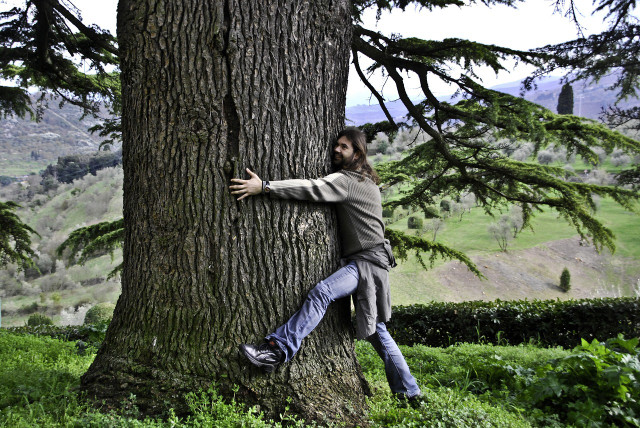
Have you ever hugged a tree? No? But you should. Find out here why it can help you escape the hustle and bustle of everyday life and focus on what’s important.
The speed and hectic pace of everyday life, crowds of people, flickering screens, speeding traffic – these are all reasons to grab your jacket, escape into the countryside for a short break and take a deep breath, far away from everyday problems and obligations. Hugging a tree can help you relieve stress and achieve deeper relaxation.
Hugging a tree: reducing stress while bathing in the forest
Researchers at the University of Michigan confirmed in a study that regular walks in the forest or spending time in nature are actually an effective remedy for stress symptoms. After that, just 20 minutes in the countryside are enough to reduce the level of the stress hormone cortisol.
The beneficial effects of nature and especially the forest have long been known in Japan as “forest bathing”. This is a natural therapy that is becoming increasingly popular in Europe. Forest bathing emphasizes the connection between a walk in the forest and mindfulness. This means that you should concentrate on feeling and perceiving the forest with all your senses. This also includes touching plants. So hugging trees can be seen as part of forest bathing.
Choose a tree and hug it: This is how it works

(Photo: CC0 / Pixabay / Pezibear)
The idea of hugging a tree also originally comes from Japan. For a long time in the Western world she was considered a bit crazy. However, it is now becoming more and more popular here too.
The approach is simple:
-
It’s best to go into the forest or choose an undisturbed place in the park or in your garden.
-
Find a tree. The size of the tree doesn’t play a big role. Listen to your intuition.
-
Hug the trunk of the tree tightly with both arms. Let your body rest against the trunk.
- Close your eyes and take a few deep breaths. Relax your body and sharpen your senses.
You can also combine the hug with a little “tree meditation”. You consciously concentrate on the areas of your body that touch the tree. Consciously perceive smells, sounds and other sensory impressions one after the other. Afterwards, focus on your breathing and notice how your breaths come and go.
Theory and study: Why hugging trees helps

(Photo: CC0 / Pixabay / Mojpe)
In everyday life we spend a large part of our time at desks, in the car or subway and in our own four walls. Especially if you live in the city, a trip to nature can become a rarity and the idea of hugging a tree may seem strange.
Still, aside from forest bathing, there are various theories as to why it’s good to hug trees. The researcher Edward O. Wilson was one of the first Western researchers to write in his 1984 book Biophilia that people prefer to be around other living organisms (such as trees and plants) rather than “dead” objects. The term “biophilia”, which was established in this context by Erich Fromm, means something like “the love of life” or “the love of the living”.
This theory is now also supported by medical institutions, which assume that experiences in nature have a positive effect on our physical and mental health. There are now studies on biophilia that assume that time in nature can improve our well-being, improve our perception of meaning and belonging, and increase creativity.
Another study from 2020 shows that, especially in times of increasing alienation, proximity to nature in urban living spaces is crucial for stable well-being and resilience. All of these findings suggest that hugging a tree can make sense.
There are also various opinions circulating that proximity to trees in particular has a positive effect on health. This is partly attributed to the energy and substances that trees give off or their essential oils. However, scientific evidence on this is still missing.
Spiritual and cultural aspects

(Photo: CC0 / Pixabay / dimitrisvetsikas1969)
From a spiritual perspective, the tree is said to have a healing effect on our soul. He is seen as our friend and teacher. His strength and energy should also be able to pass on to people through a hug.
Particular importance is attributed to the roots of the tree, through which it is firmly anchored in the ground. This stability, which is often associated with calm, strength and serenity, is said to have a positive effect on our thoughts and attitudes.
Whether you want to adopt these points of view depends, of course, primarily on your own beliefs. Some feel relaxed, grateful and calm when hugging a tree. Others are less comfortable with the unusual method. Just try it out and find out if a tree hug can brighten your everyday life and your mood.
Read more on Techzle\.com:
- Children’s books about nature, environmental protection and sustainability
- Picnic in harmony with nature – this is what you should pay attention to
- The 12 most beautiful organic hotels in Germany & Europe
Edited by Lina Brammertz